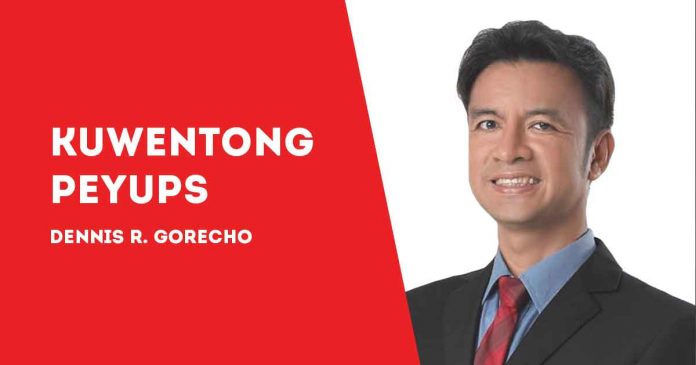
“KUNG HINDI ngayon, kailan pa?” is one of the lines by actress Mae Paner in Director Joel Lamangan’s “Oras de Peligro” film on the Edsa People Power Revolution.
It is a familiar slogan in the student movement associated with Abraham “Ditto” Sarmiento Jr. who was the editor-in-chief of the Philippine Collegian in 1975-1976.
“Oras de Peligro” touches on the situation of an ordinary family who must deal with the grief of their slain patriarch while a bloodless revolution is going on. The timeline begins four days before the flight from power of the ruling family.
Lamangan, who was jailed and tortured during the martial law era, said in an interview, “There are many kinds of truth. The truth dictated by those who serve the favored few, and the truth that voices out the interest of the majority. I am siding with the latter truth.”
He added that actual footages of what exactly transpired in 1986 in EDSA are shown and juxtaposed with the other scenes “so viewers will believe it. We are not making up things.”
It is written by playwright and martial law survivor Bonifacio Ilagan and screenwriter Eric Ramos with Cherry Pie Picache, Allen Dizon and Therese Malvar as lead stars.
The slogan “Kung hindi tayo kikibo, sino ang kikibo? Kung hindi tayo kikilos, sino ang kikilos? Kung hindi ngayon, kailan pa?” was lifted from Sarmiento’s 1976 editorial which became one of the most famous front pages of the Philippine Collegian.
The Philippine Collegian is the official weekly student publication of the University of the Philippines (UP) Diliman and commonly known as Kulê.
During Martial Law, Kule defied the media blackout by going underground. Student newspapers served as voice of defiance and became part of the “mosquito press.”
For speaking out against the Marcos regime, Sarmiento was arrested In January 1976 and imprisoned for seven months and seven days.
Due to deteriorating health, he died because of a heart attack at the age of 27 a little over a year after being released from prison.
I was 15 years old and about to finish high school when I accompanied my relatives to participate in EDSA.
Perhaps some of the cases decided by the Supreme Court guided me in understanding the nature of Martial Law.
“The greatest threat to freedom is the shortness of human memory,” thus said former Supreme Court Chief Justice Claudio Teehankee in the case of Olaguer vs Military Commission (G.R. No. L-54558 May 22, 1987) as he gave recognition to “the unforgettable and noble sacrifices of the countless brave and patriotic men and women who fell as martyrs and victims during the long dark years of the deposed regime.”
Teehankee stressed that “draconian decrees were issued whereby many were locked up indefinitely. While the people for the most part suffered in silence and waited, others never gave up the struggle for truth, freedom, justice and democracy, a common commitment which is what makes a people a nation instead of a gathering of self-seeking individuals.”
In Marcos vs Manglapus, (G.R. No. 88211 Sept. 15, 1989), former Chief Justice Marcelo Fernan stressed that “millions of our people braved military tanks and firepower, kept vigil, prayed, and in countless manner and ways contributed time, effort and money” to put an end to an evidently untenable claim to power of a dictator.
The Supreme Court further stressed in Brocka vs Enrile (G.R. No. 69863-65, Dec. 10, 1990) that “this should not be a license to run roughshod over a citizen’s basic constitutional rights, such as due process, or manipulate the law to suit dictatorial tendencies.”
At least 9,000 victims of human rights violations were monitored by the Task Force Detainees of the Philippines (TFDP) from 1969 to 1986.
There were some scenes that showed UP students in EDSA.
Back in the 1970s, many members of the UP community participated in protests against the reign of dictator Ferdinand Marcos Sr.
Known as the First Quarter Storm (FQS), there were demonstrations, protests and marches against the Marcos administration, mostly organized by students, which took place from January 26 to March 17, 1970.
Violent dispersals of ensuing FQS protests were among the watershed events where large numbers of Filipino students of the 1970s were radicalized against the Marcos administration.
The campus molded us to fight for the causes we believe in; trained us for the skills we need to communicate ideas and rally others to effect changes in society.
It was on my third year in college that I became part of the UP student movement as the photographer for the Philippine Collegian and later as a member of the Sandigan Para sa Mag-aaral at Sambayanan (SAMASA).
“The movie is also for denialists, revisionists, and distortionists of history, and those who might need a tap on their brain area where memory resides,” says veteran journalist Ma. Ceres Doyo.
***
“Peyups” is the moniker of University of the Philippines.
***
Atty. Dennis R. Gorecho heads the seafarers’ division of the Sapalo Velez Bundang Bulilan law offices. For comments, e-mail info@sapalovelez.com, or call 09175025808 or 09088665786./PN


